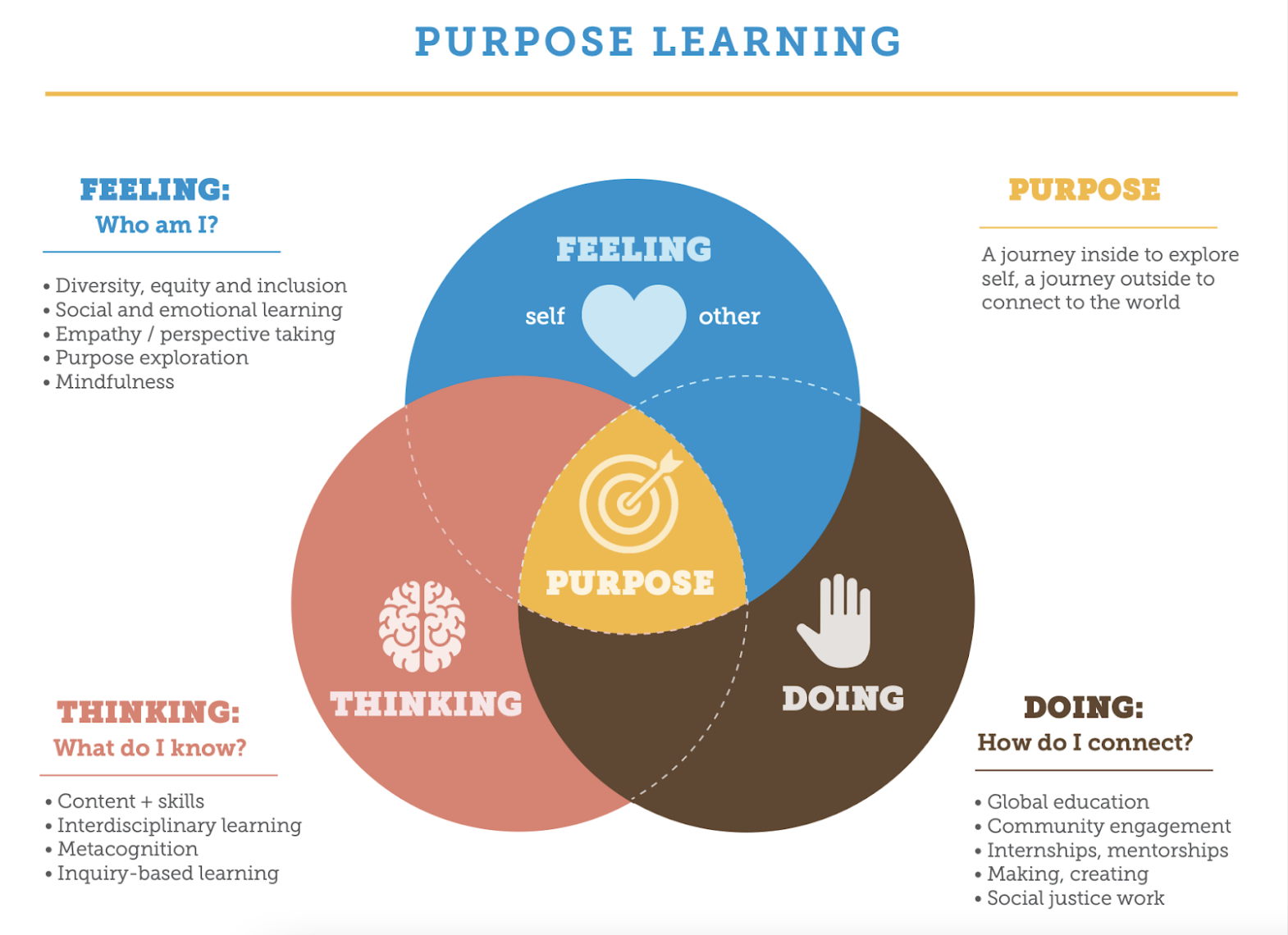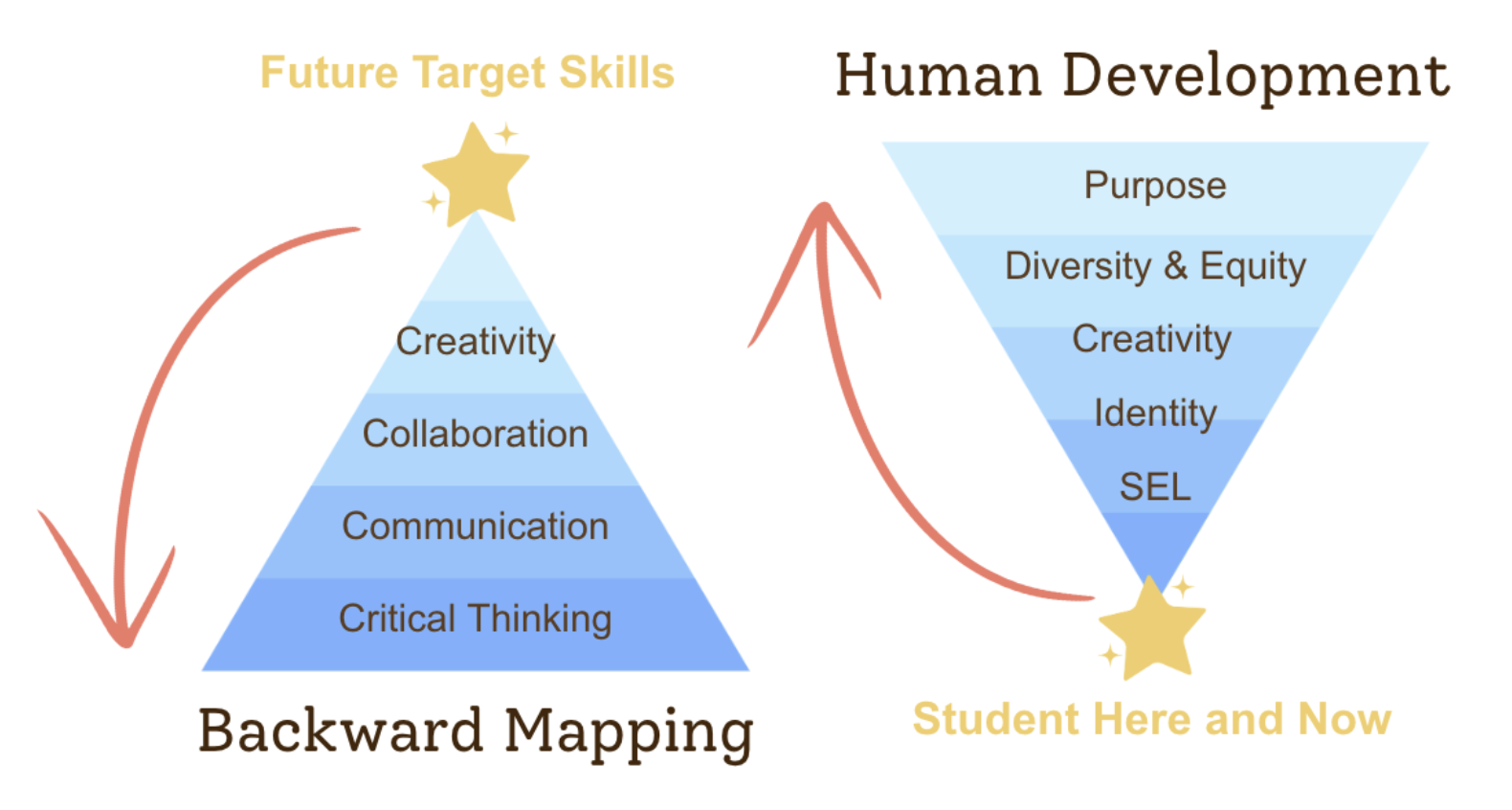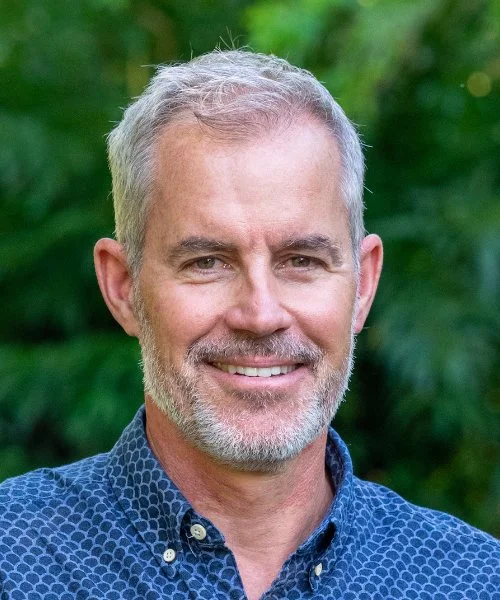What If the Purpose of School Were Purpose?
What excites us about the WSCB Community is our ability, right in this historical moment, to reimagine school through the lens of Positive Psychology, a growing movement to explore how humans make meaning, find happiness, and live with purpose. The theory and science of purpose have profound implications for how we design tomorrow’s learning environments.
Hundreds of medical studies (along with the recent Netflix documentary on the world’s Blue Zones) have shown that adults with purpose are happier, healthier, heal faster, and sleep better. Students with purpose are deeper learners and better stress managers. At World Leadership School, we believe that purpose is not a skill alongside grit, growth mindset, creativity, or other so-called “non-cognitive” skills. Rather, purpose is the capstone mindset from which these other skills ensue. Purpose is not optional. It’s a survival skill that helps us navigate an increasingly complex world.
So what is purpose? Stanford’s Center on Adolescence defines it as “a stable intention that is meaningful to self and consequential for the world.” In other words, purpose happens when a person connects with their gifts and uses these gifts to contribute to something bigger. Purpose can be very simple, such as a student who practices stand-up comedy and loves “lighting up the room so others smile.” But only 20% of today’s high schoolers are purposeful, according to Stanford’s Youth Purpose Study.
Meanwhile, students are experiencing the worst mental health crisis in recorded history, with suicide rates having risen 60 percent since 2011, according to the National Center on Health Statistics.
As a result of what we know about purpose, and what youth are experiencing, a growing number of schools are asking the question: “What if the purpose of school were purpose?” In other words, what if we designed learning specifically around human thriving? At our annual K-12 Purpose Summit, which happens each February in Boulder, Colorado, we coach teams through a yearlong process of designing purpose through a lens of thinking, feeling, and doing – which we call Purpose Learning. During this summit, educators use key design tools such as experience maps and the WLS Purpose Planner. Each year, teams design interdisciplinary units, advisory programs, and, most recently, a brand-new middle school. Purpose Learning is not a pipe dream, but it does require a new design approach.
Purpose Learning is a new framework based on old ideas that integrates today’s school reform into a simple, actionable framework. Learning in the past emphasized thinking, or helping students memorize content and develop key cognitive skills. Learning in the future will integrate thinking with rich forms of feeling and doing, all at the same time. At the center of these three domains, students have a chance to explore purpose.
Recently we worked with Montessori Academy of Colorado (MAC) to design its new middle school, which launched in the fall of 2022, through the lens of purpose learning. In a culinary arts unit, students focused on the driving question: “What sustains us?” and worked with Tommy Lee, a Denver chef whose restaurant Hop Alley explores the painful racist history of Denver’s Chinatown in the 1870s. Through a series of spiraling “engagement touch points,” students explored the rituals behind making ramen, the history of Denver, and the science of food before creating their own recipes based on their own cultural identities. “The highlight was watching teachers and students find their identity and their purpose in parallel through the work,” says Alicia FaJohn, MAC’s associate head of school who oversaw the middle school launch.
Purpose learning can also be used to disrupt traditional education and create a two-way street of learning. We worked with Nicholas Day, the director of academic programs at Appleby College (Toronto, Canada), to bring greater purpose to the AP U.S. History course he was teaching. Day challenged each student to identify a thread they could follow through the course, which required them to complete research, collect documents, and give a summative oral defense in front of their peers. One student studied women’s political participation in U.S. politics from First Lady Abigail Adams to Vice President Kamala Harris. Though the student had previously struggled in group presentations, she “rose to the occasion and not only volunteered to go first but spoke with such confidence that she drew the audience in,” Day says. “In a touching moment, she erupted into cathartic tears on our last day because she was so proud of the work she did in the course.”
Purpose is a unique journey for each human, and it’s an expedition that varies dramatically for each school. In our experience, each school enters the purpose-learning framework from different places. Many independent schools enter via learning as thinking, while others focus on doing via project-based, arts-focused, or expeditionary learning. Where independent schools can often grow is learning as feeling—in other words, the part of purpose learning where students drop into emotion, see others with empathy, and have the space and support to do the inner work of identity and purpose clarification.
In our work, we’ve noticed that some charter school networks are doing groundbreaking work in the learning-as-feeling area, most notably advisory. In these schools, helping students process emotions and cultivate deep communities of belonging is a foundational move toward deeper learning. Professional learning communities are often siloed by public, charter, and independent schools. But in purpose learning, diverse schools benefit by learning from each other.
Purpose-driven schools gently challenge backward-mapping, the key tool used to design learning since the early 1900s. In backward mapping, a group of people gathers to decide what students should know or be able to do upon graduation, and they build school from there. Backward mapping helped build last century’s content-focused system. This century, so far, it has helped fuel the Common Core national learning standards, the Portrait of a Graduate movement, and the rise of Competency-Based Learning.
Purpose-driven schools shift focus in subtle but important ways. Instead of focusing mainly on future learning targets, these schools prioritize the inner life of children right now and build upward. In other words, they focus on human development. This critical pivot is described in the work of Mary Helen Immordino-Yang, a neuroscientist at the University of Southern California who has conducted groundbreaking research on the primacy of emotion in learning. “What we need to focus on in the design of schooling is the development of the people in the system and allow learning to follow that. Right now we have the cart before the horse,” she says in a June 2022 episode of the Finding Mastery podcast.
But purpose learning is not a revolution; it’s an incremental journey along a both/and spectrum. Purpose-driven schools still use backward mapping as a curriculum tool and follow state learning standards. In the same way, competency-based learning is a powerful step forward from content-based learning but works well when schools prioritize human development first amid a community of belonging.
(portions of this article appeared in the Winter 2023 edition of Independent School Magazine)
_________
Ross Wehner, Founder of World Leadership School and Co-Founder of TeachUNITED, is an education entrepreneur who works to bring greater purpose to K-12 learning. He believes that school can and should be the ultimate platform for launching children into lives of purpose.



